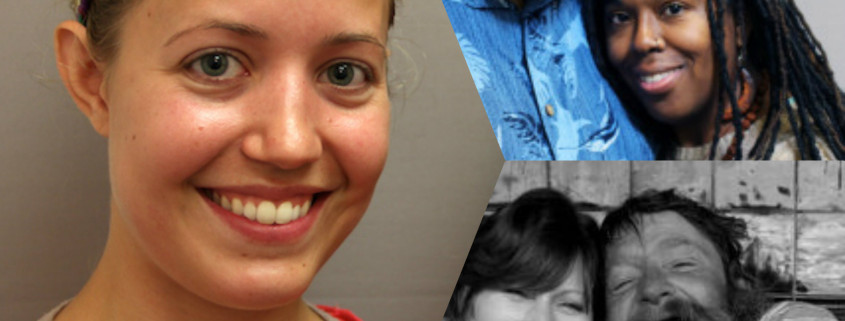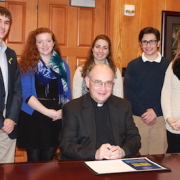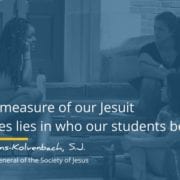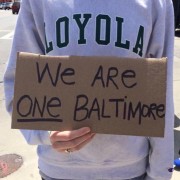Storytelling, Human Connection and Advocacy: Transforming Numbers into Faces
BY GUEST BLOGGER | June 15, 2015
written by: Hannah Hunthausen, Program Coordinator, Faith & Family Homelessness Project, Seattle University School of the Theology & Ministry
Editor’s Note: This post was originally published for Seattle University School of Theology & Ministry’s blog.
Often, when we talk about homelessness, we talk numbers. Numbers convey information powerfully and provoke instant (hopefully productive) outrage. Take this little taste of regional homelessness by the numbers: in January of this year, at least 3,772 people were living without shelter in King County; last school year, Washington state school districts identified 32,494 Washington students as homeless; and, as of this March, over 800 families were homeless in King County – on a waitlist for housing while living in emergency shelters or in places not meant for human habitation.
When we talk about the affordable housing crisis in our region, we consider the almost 300,000 households that spend more than 30% of their income on housing and the sad reality that a single parent would have to make over $27/hour in order to afford a 2-bedroom apartment in King County.
![Jordan Hedgecock [LEFT] (pictured with StoryCorps recorder Tanya Mettlen), age 26, describes the moment she decided she could no longer stay in an abusive relationship. She was estranged from her family; and as the wife of a recently discharged military veteran with no local friends to turn to, she became homeless with her two young sons.](https://www.ignatiansolidarity.net/wp-content/uploads/2015/06/Jordan-Kemper-and-Tanya-Mettlin-1.jpeg)
Jordan Hedgecock [LEFT] (pictured with StoryCorps recorder Tanya Mettlen), age 26, described the moment she decided she could no longer stay in an abusive relationship. She was estranged from her family; and as the wife of a recently discharged military veteran with no local friends to turn to, she became homeless with her two young sons.
And data won’t tell us their stories. Numbers can’t force us to recognize and honor the human dignity of the grizzled guy with the cardboard sign on the side of the road or consider the day-to-day struggles of a single mother and daughter living in their car.
Our brothers and sisters experiencing homelessness have been increasingly and systematically devalued and dehumanized in our society (see also), and, while data paints a picture, it can’t rebuild our lost human connection.
For that, we need stories.
As Paige McAdams wrote recently in a blog post for Firesteel, stories are bridges. They bridge the gaps between us – our real and perceived differences, but also our gaps in awareness and empathy. Storytelling allows all of us to enter into the reality of another person or group of people, if only for a moment. As we listen to or read about the personal experiences of others, our humanity recognizes the humanity of the tellers, and giving voice to a story can lend both the storyteller and her listeners incredible strength and agency. As Franklin Gilliard, a formerly homeless Tacoma husband and father, recently said at a community event celebrating the StoryCorps “Finding Our Way” project, “Giving people my story makes them stronger. They know that people can relate to them, and people are not always looking down.” Storytelling makes us feel closer to one another and gives us purpose.
Many of us who are advocates have felt this particularly strongly in the last few months. Powerful personal stories of experiences with homelessness have been in the air quite literally – streaming and playing on the airwaves of KUOW. It’s been a season of stories, first with The Moth’s “Home: Lost and Found” showcase in April, and more recently, at community events at the WA State Conference on Ending Homelessness in Tacoma and at the Gates Foundation celebrating the incredible StoryCorps project, “Finding Our Way: Puget Sound Stories About Family Homelessness.”
And stories like those of the participants in the StoryCorps and The Moth projects not only fill our hearts, they serve as powerful tools for advocacy. When you can share with a city council person or a legislator the story and challenges of someone who has experienced homelessness in their city or district, you give the startling data and statistics they already know a face. You humanize the issue(s) and begin to bridge those gaps.
Firesteel now has a website that puts this power at our fingertips. At firesteelwa.
When we tell and listen to stories, we give faces to the numbers, and we come to find that people aren’t “the homeless” – they’re just people without homes. People who, like us, have a fundamental right to housing.
WHAT YOU CAN DO:
- Listen to “Finding Our Way” stories produced by StoryCorps on KUOW every Tuesday, now through July 7.
- Find even more “Finding Our Way” stories, produced by Seattle University’s Project on Family Homelessness and Firesteel on the Firesteel website.
- Stream other StoryCorps conversations on the StoryCorps website, or subscribe to the StoryCorps podcast.
- Listen to and share stories on homelessness or poverty like this one on The Moth.
- If you live in the state of Washington, call your legislator through the Washington State Legislative Hotline at 1.800.562.6000 to advocate for affordable housing.
- Read other blog posts on storytelling (here, here and here)
- Share your story with family and friends
- Act on one of the Project on Family Homelessness’s “10 Things You Can Do to End Family Homelessness”
- Join “Facing Homelessness” on Facebook by contributing your time and resources and become part of their “Just Say Hello” campaign
ISN welcomes faith & justice related blog submissions from members of the Ignatian family. Please let us know of any blog ideas or posts using this form: ISN Blog Ideas











Are we putting all our hope on the impact of the encyclical? Are we blaming everything on the environemt as the issue that will save the church?